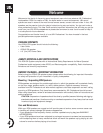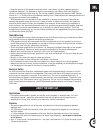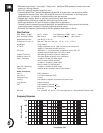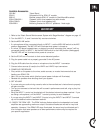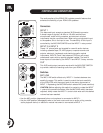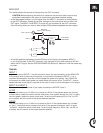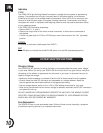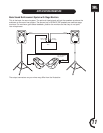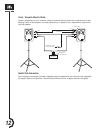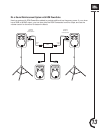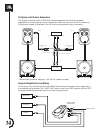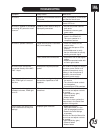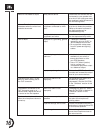
Available Accessories
SS2-BK Tripod Stand
ESK15 Suspension Kit for EON 15” models
BRK15 Bracket, adapts EON 15” models to OmniMount® brackets
EON15 BAG/W-1 Zippered, plush-lined speaker bag with wheels
EON15 BAG-1 Zippered, plush-lined speaker bag
EON BRK1 Mounting bracket for EON 15” speakers - fixed angleWOICKSTART
QUICKSTART
1. Refer to the “Basic Sound Reinforcement System with Stage Monitors” diagram on page 10.
2. Turn the INPUT 1, 2, and 3 controls fully counter-clockwise.
3. Set the MIC/LINE switch.
• If a microphone will be connected directly to INPUT 1, set the MIC/LINE switch to the MIC
position (depressed). The MIC LED will illuminate when power is turned on.
• If a mixer, CD player, cassette tape, or electronic musical instrument (the “source”) will be
connected directly to INPUT 1, set the MIC/LINE switch to the LINE position (disengaged).
The MIC LED will not illuminate when power is turned on.
4. Set the EQ HF and LF controls to their center detented position.
5. Plug the power cable into a properly grounded 3-wire AC power.
6. Plug the XLR cable from the mixer or microphone into the INPUT 1 connector.
7. Connect other sources (if used) to the LINE 2 and LINE 3 input connectors.
8. POWER UP PROCEDURE
• First, switch on the power to the mixer, audio sources, or musical instruments that are
feeding your EON15 G2.
• Next, turn on the power switch (the front panel power indicator will illuminate).
• Reverse this process when shutting down your system.
9. SET VOLUME
• If you are using an audio mixing console, refer to the manufacturer’s instructions to properly
set gain structure.
• Turn up your sources to the level that will be used in performance and talk, sing or play into
the system.
• Bring the INPUT 1 control up (clockwise) until the desired volume has been reached. If you
are using a microphone, turn the INPUT 1 control up slowly to avoid feedback.
• If you are using the INPUT 2 and INPUT 3 inputs, bring the INPUT 2 and INPUT 3 controls
up until the desired volume has been reached.
10. CHECK THE PEAK LED - The PEAK indicator flashes when the loudspeaker’s on-board
amplifiers are approaching maximum output. Occasional flashes are normal for very loud
operation. However, if the PEAK LED stays illuminated, the sound may be distorted and it
is an indication that more speakers or a lower performance volume may be required for
your specific application.
7






